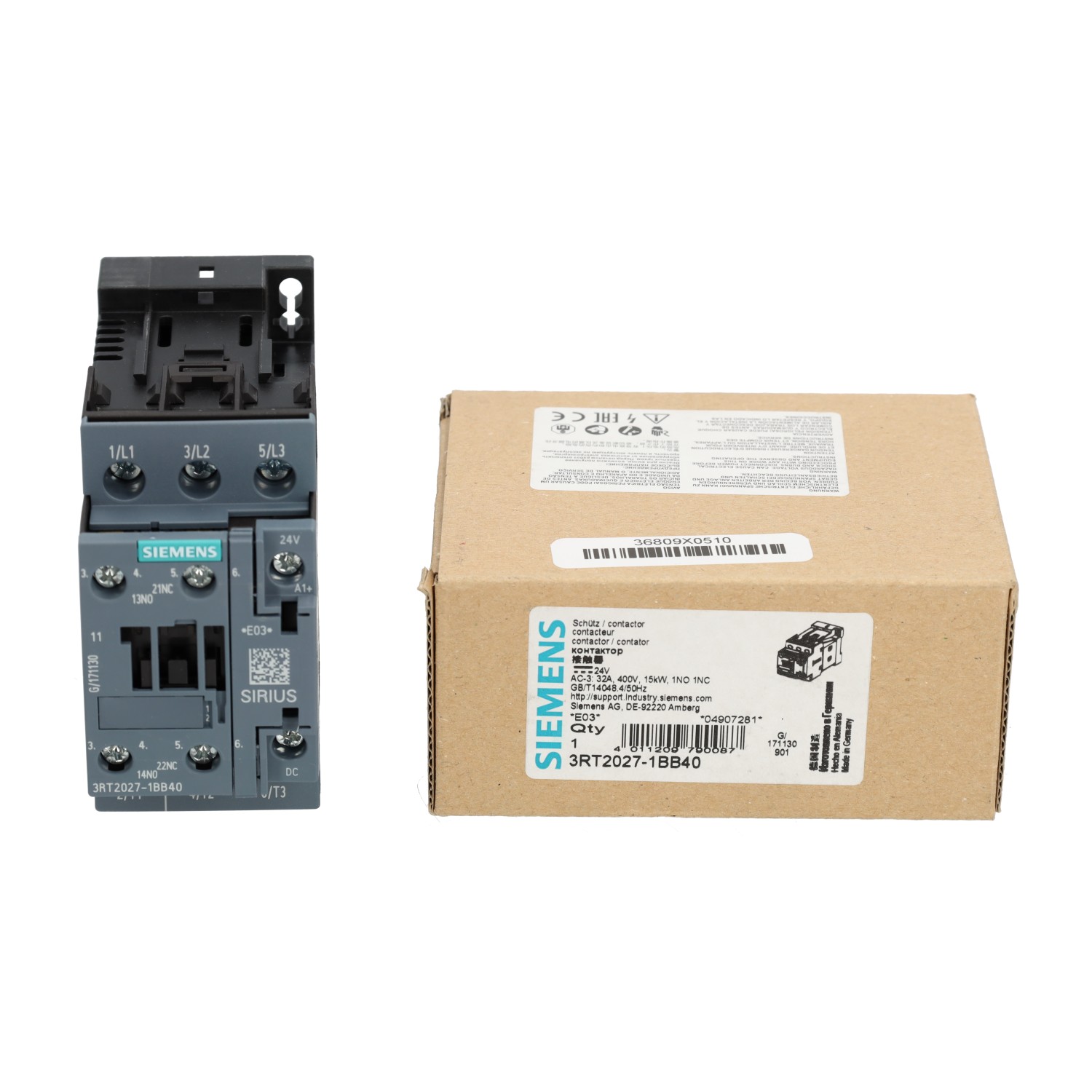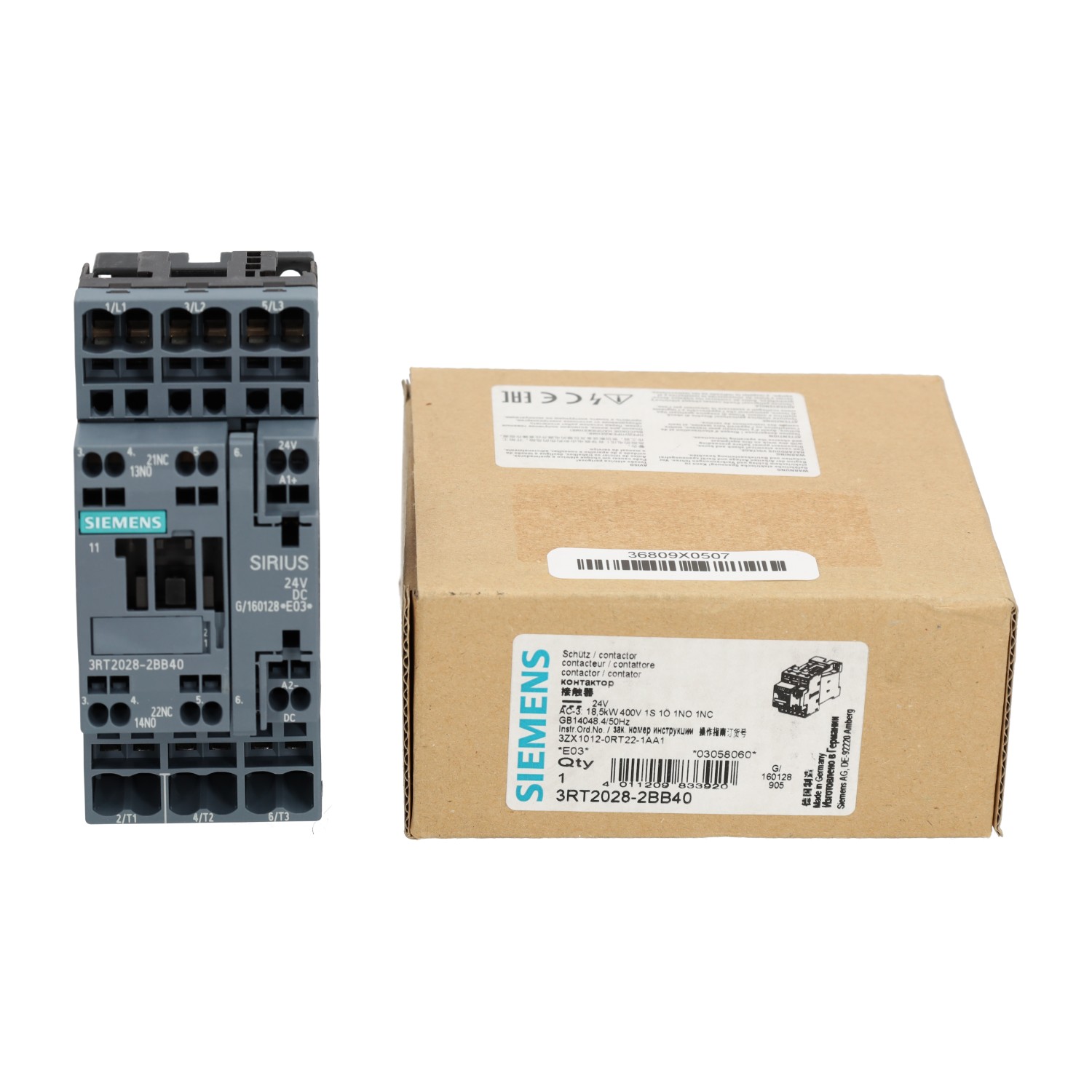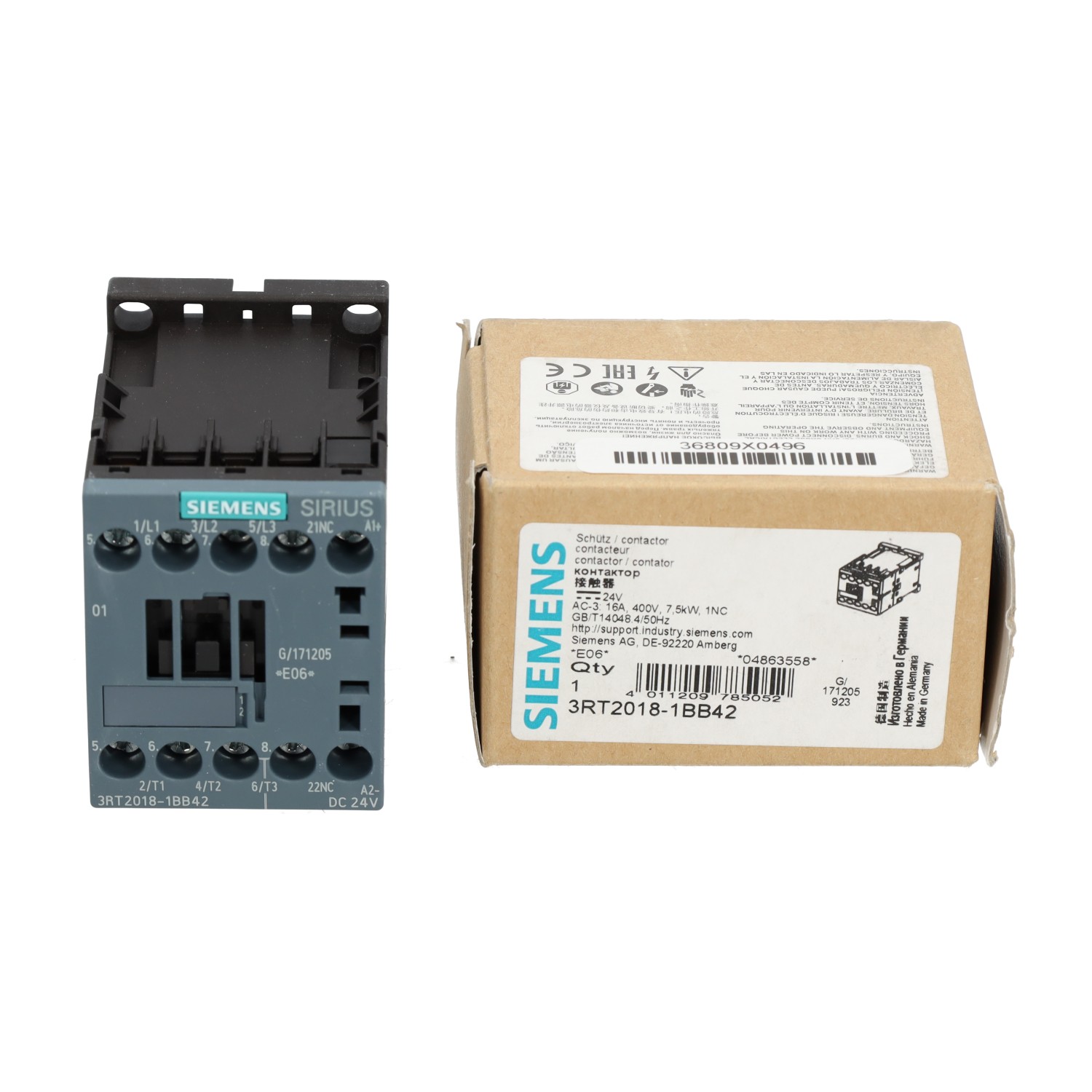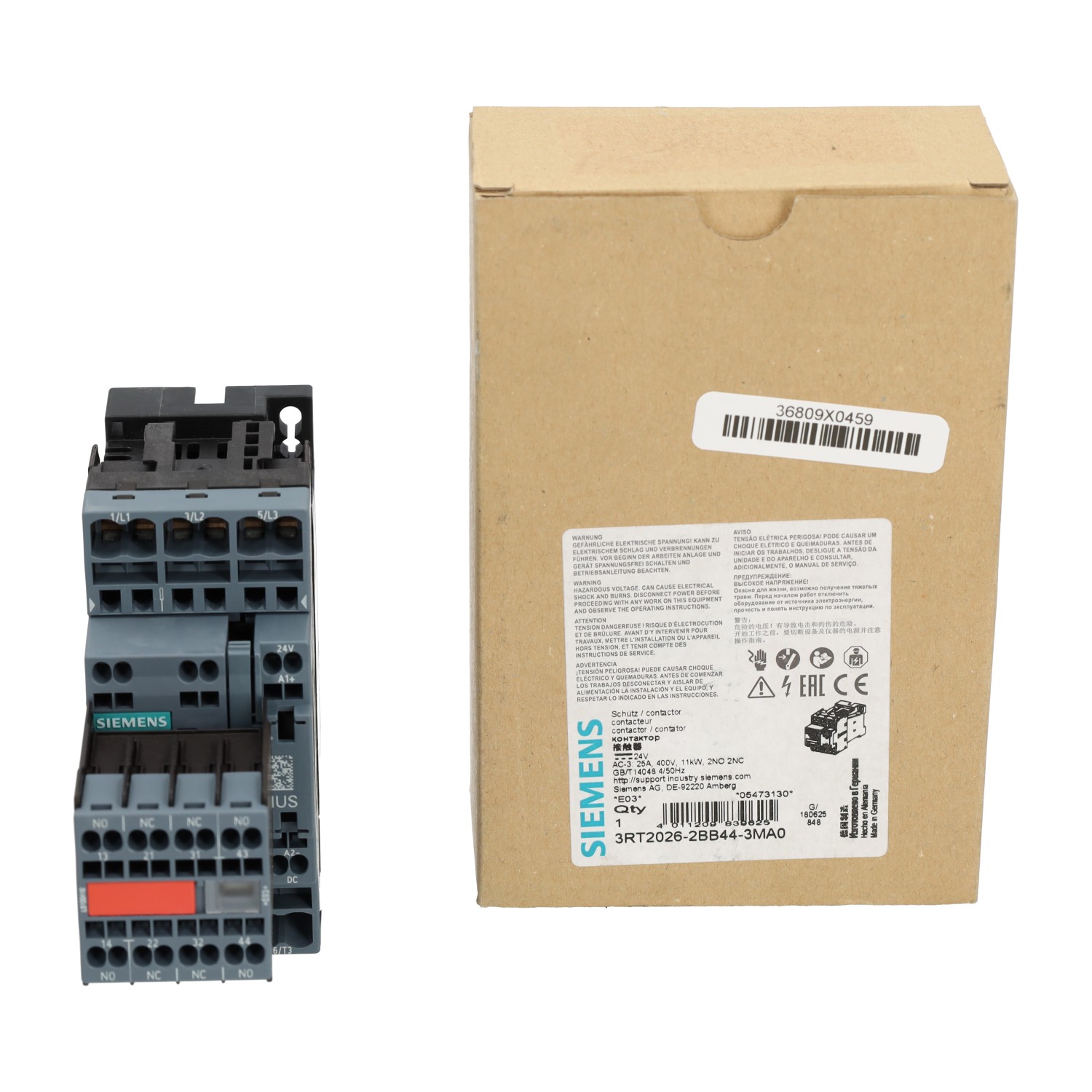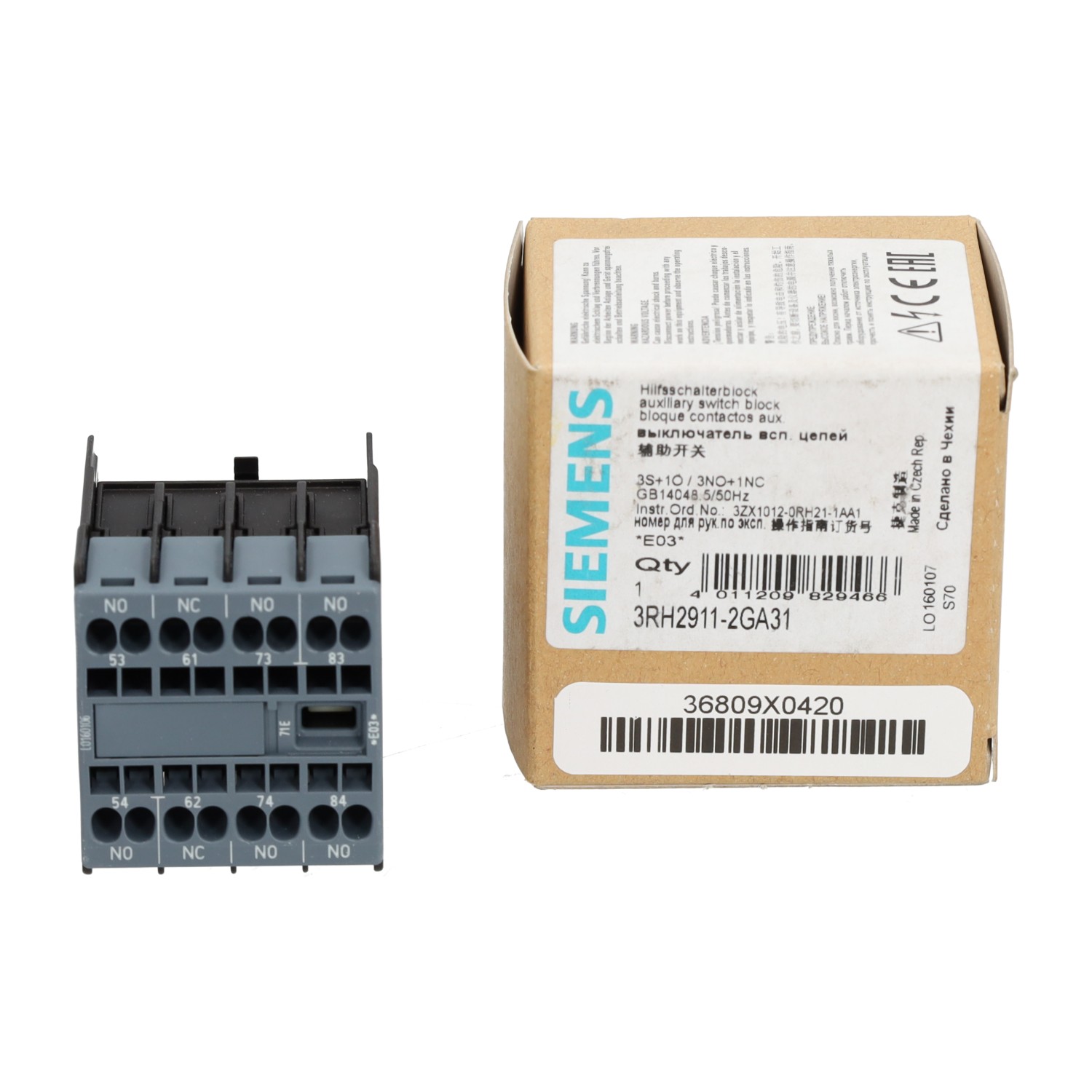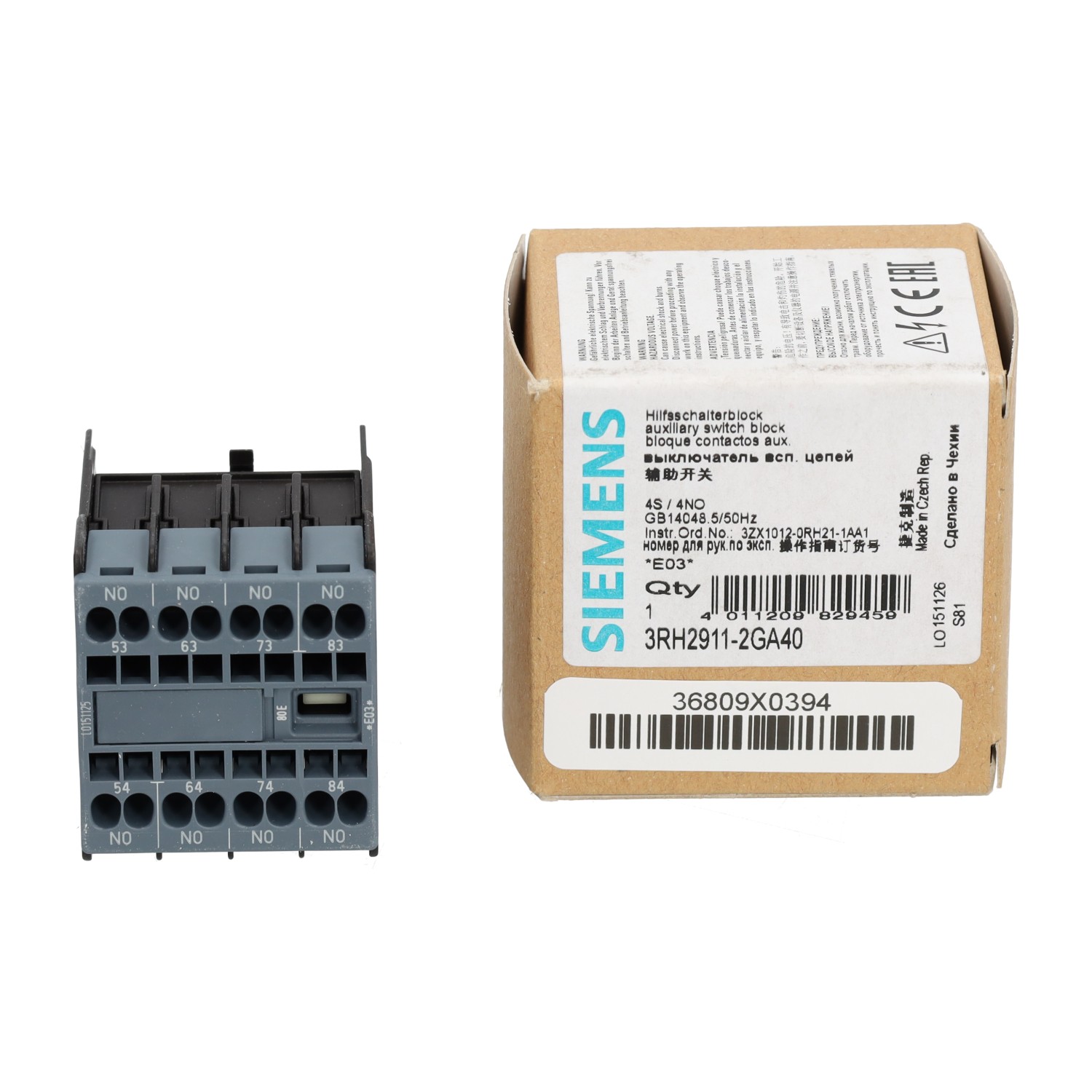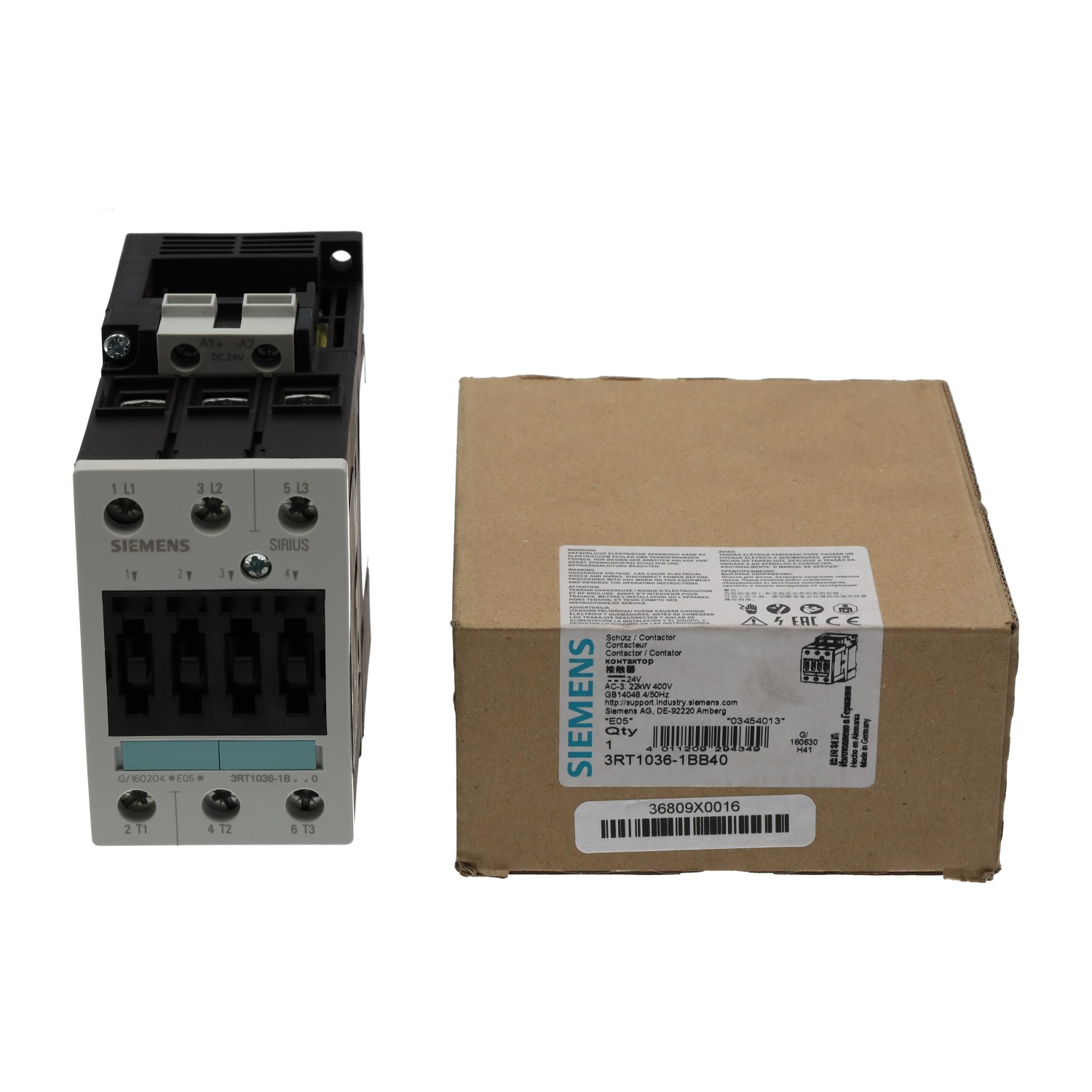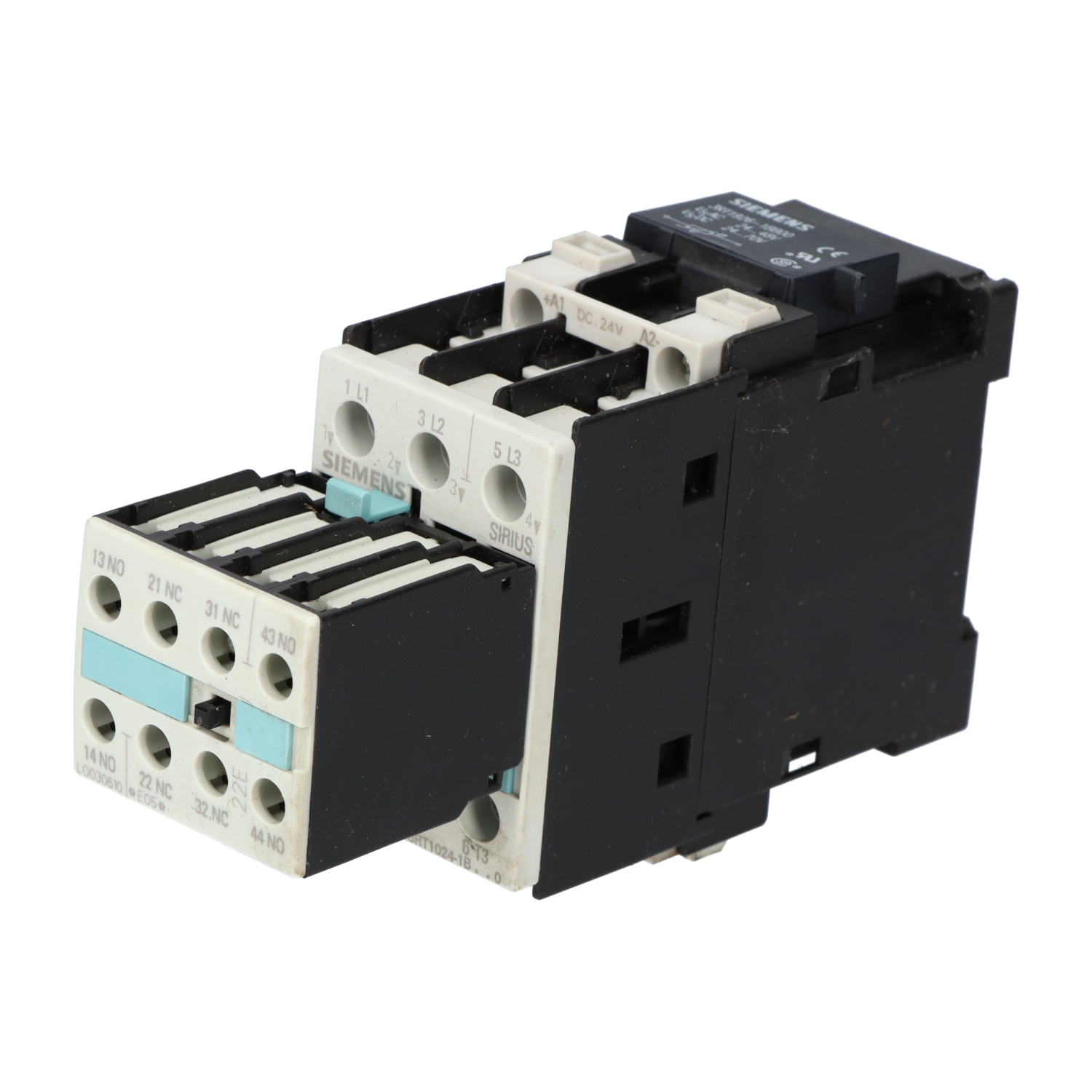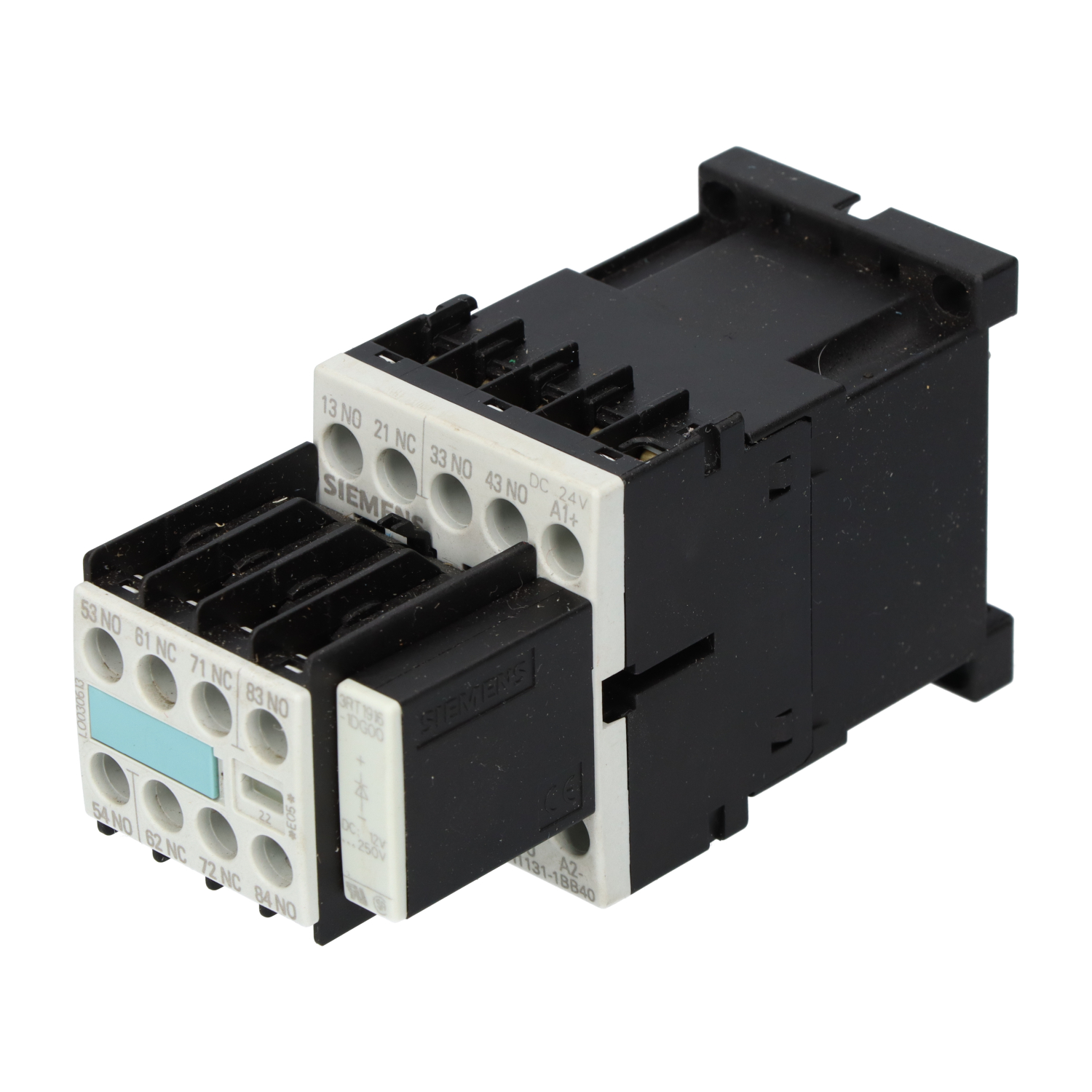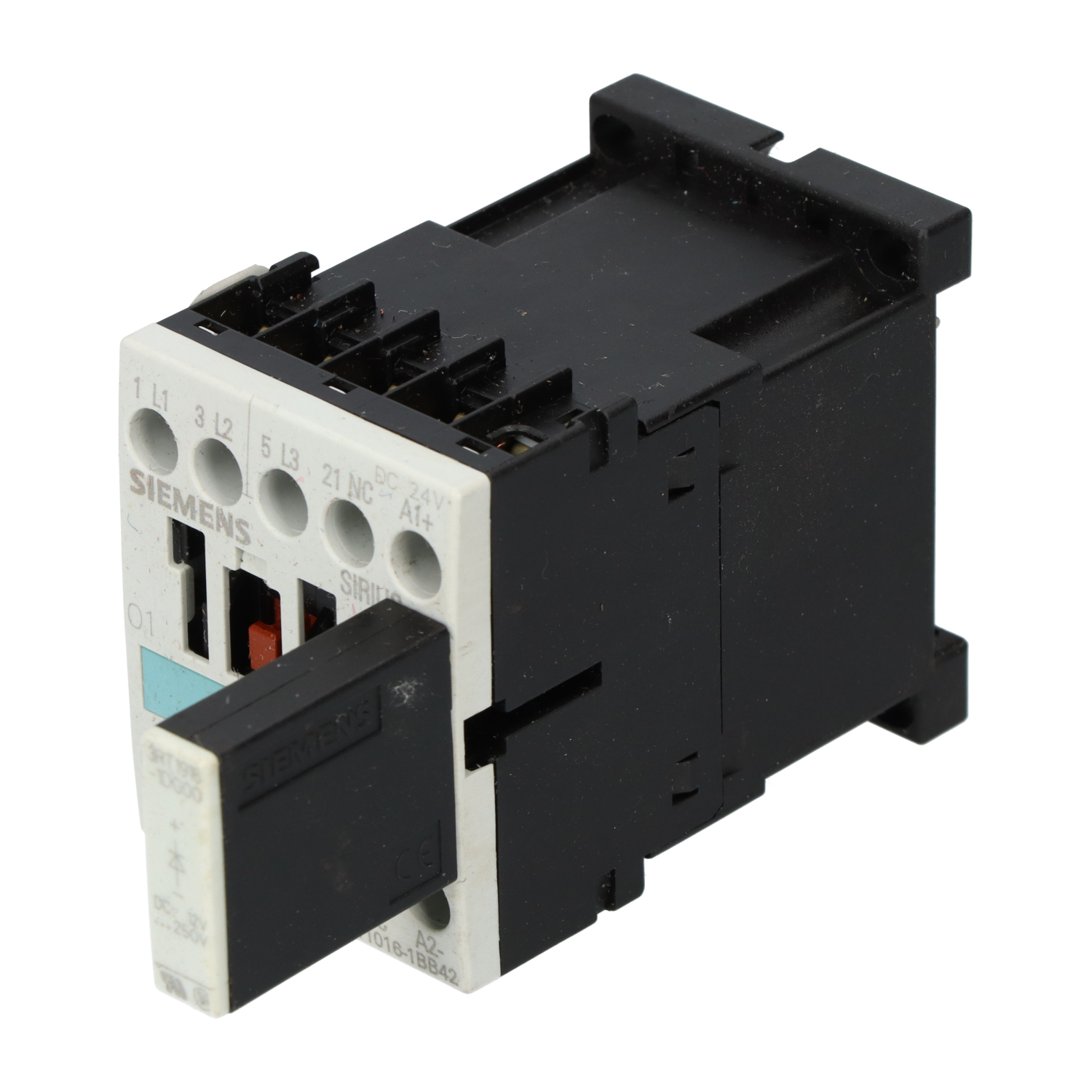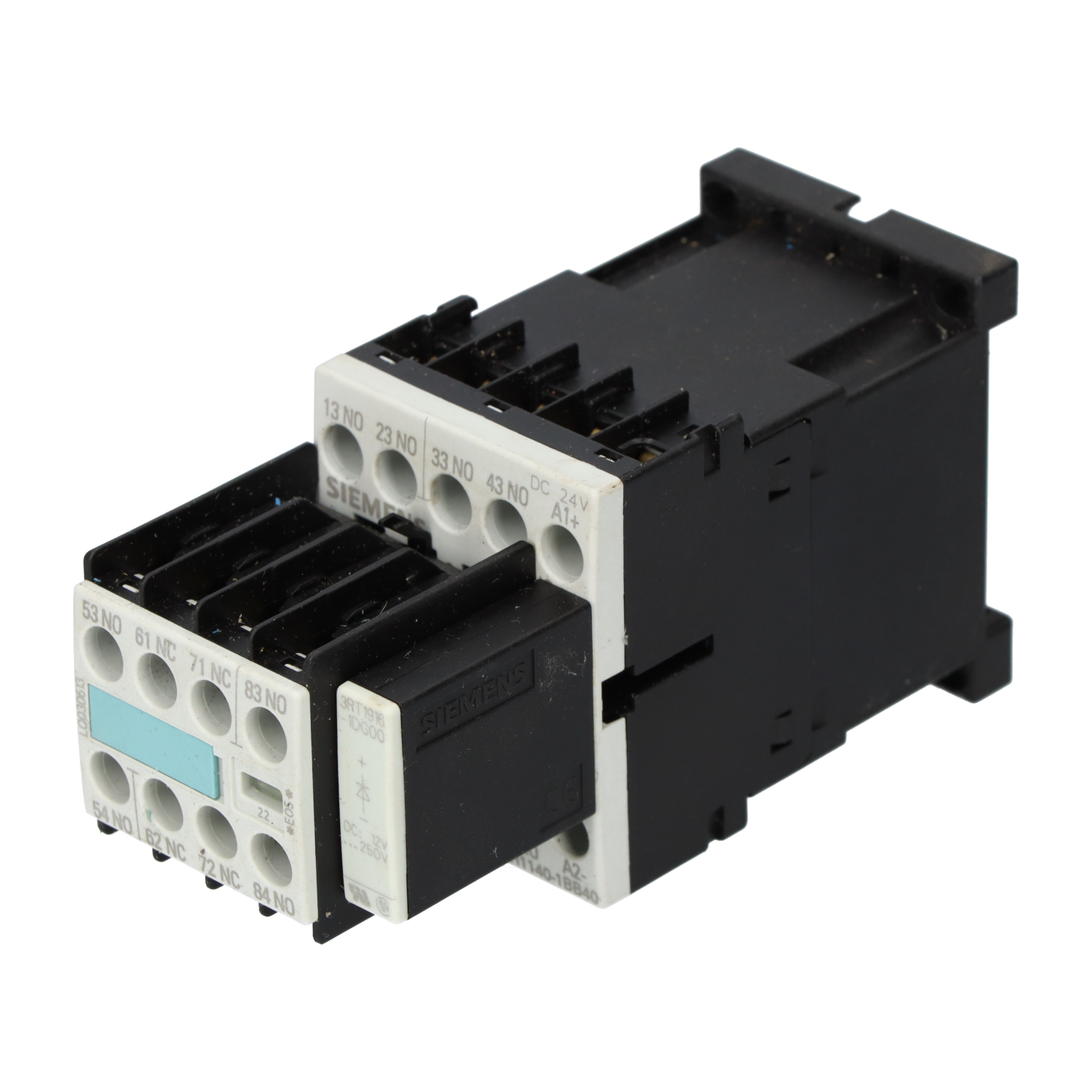Contactors and relays for controlling and switching of loads
In need of a contactor or a relay for switching your electrical power circuits? We offer a vast assortment of these devices in many types and sizes, with varying features and capacities. Within our range you will find a variety of renowned contactor brands including ABB, General Electric, Omron and Schneider-Electric. You can pick from a choice of models in different price ranges.
Contactors
Contactor types
Various types of contactors are available. They are used to repeatedly create and disrupt an electric circuit under regular circumstances. Their breaking current ranges from just several amperes to literally thousands, and from 24 V DC to many kilovolts. When selecting a model, the ratings of the intended load amperage should be considered. Oversizing a contactor is possible. However, you should never undersize it. Some models feature auxiliary contacts, which are either N.O. (normally open) or N.C. (normally closed). A contactor at least comprises a single pair of three-phase input and output contacts. In some cases, the contacts are replaceable cartridges. And in general, contactors are equipped with arc chutes for safety purposes. Arc chutes, also known as arc splitters or arc dividers, are sets of metal plates, which contain ferromagnetic material. They are positioned in parallel and insulated from each other. For all your automation needs, we stock a broad spectrum of contactor types.
Functioning of contactors
A contactor is an electro-mechanical device. Its purpose is usually to turn power on when energized. That’s why in most cases N.O., or normally open, main power contacts are used. These power contacts are also referred to as poles. All contactor types are equipped with a low voltage coil, which typically operates with a 24-volt DC signal. Let’s see, for instance, what happens if we connect a contactor to an electric motor, or rather its PLC. Motor control contactors are often referred to as motor starters and they are usually equipped with an overload relay. When the contactor is already combined with such a relay, the entire unit is known as a combination starter. Both the motor and feeder wiring are safeguarded this way. The instant the solenoid coil of the contactor is energized, an electromagnetic field is generated. This field induces the three mechanical contacts to close. The three-phase power is allowed to get to the motor, turning it on. Conversely, the load-carrying contacts will be opened by a spring mechanism when the coil is de-energized. Generally, a contactor is used for loads exceeding 10 A.
Contactor applications
Contactors are intended for switching devices with higher voltage and current rates, like lights, capacitors, and motors. For instance, they are suitable for frequently turning loads on and off. Alternatively, they can be incorporated into an emergency stop circuit. In this setup, they stay energized for prolonged periods to deliver power to equipment. As soon as the emergency stop is triggered, the power delivery is cut. All connected hardware is immediately de-energized. When installing a contactor, keep in mind they are usually to be fitted and wired into place. Replacing them, conversely, requires both unbolting and unwiring. However, in some cases disassembly from the front is possible. This specific design allows for the replacement of individual components. Think carefully beforehand about the exact requirements you have for your contactor and under what conditions it will be used.
Relay types
A relay can be described as a switch, which electronically or electromechanically opens and closes circuits. It can have an arbitrary number of contacts, divided over several contact types like break contacts, make contacts, or any combination of these. The circuit is controlled by converting a relatively small electric current into larger currents by means of electromagnetism. Various relay types exist, which can be classified based on application, configuration, function etcetera. Some example types are latching relays, reed relays, time delay relays, rotary relays, thermal relays and moving coil relays.
Normally open and normally closed functioning
Normally open relays are among the most common variants. How do these devices work? Current passes through an input circuit. Subsequently, an electromagnet is activated. Then a magnetic field is generated, which attracts a contact that connects to the second, larger circuit. This way, the current is allowed to pass. By default, the second, larger circuit is in the off position. As the current source is eliminated, the contact is pulled away from the second circuit by a spring. The electricity flow is interrupted after which the device is turned off. With normally closed relays, it is exactly the other way around. An electromagnet pulls the contact away from the second circuit, as soon as the first circuit is triggered. Some normally closed relay applications include telephone circuits and air-conditioning. Examples of normally open relay usage are motors and compressors, burglar alarm systems and fan controls.
Time-delay, sequential and automotive relays
Relays are employed when it is required to manage a circuit through an external low-power signal, or where multiple circuits are to be driven by a sole signal. Do you need parts or devices to be supplied with energy for a defined period of time? Or should a component be switched on or off after a certain delay? Then a time-delay relay is an appropriate solution. Thanks to their built-in time delay functions, these devices are ideally suited to a range of time-related applications. Other applications, like runway lights or processes which include the sequencing of power supply, benefit from sequential relays. With these models, it is possible to provide several components in turn with power. This powering process usually takes place in a defined order. Another good example of the extensive scope of relay uses, are automotive applications. Almost all advanced safety and electrical convenience features utilize them. Some examples of systems which involve these devices are alarm and warning systems (e.g., seatbelt usage, hazard detection), headlights and even the windshield wipers of regular cars and trucks.

